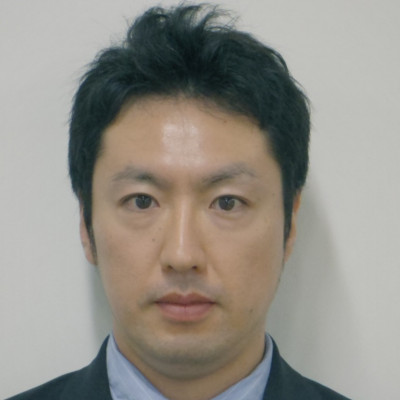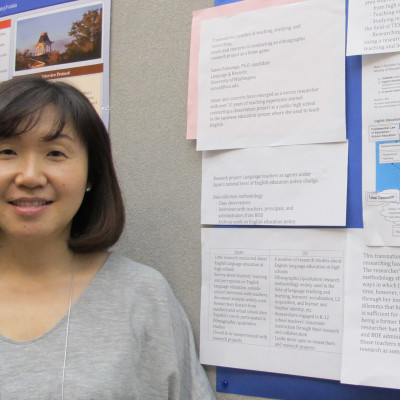Sessions / Junior / Senior High School
The Teaching of LOTE in a Japanese High School #2827
In Japan, English is the dominant foreign language taught in classrooms and a limited number of high schools provide languages other than English (LOTE) (MEXT, 1996, Okabe, 2002). However, teaching LOTE is said to be beneficial for developing open-minded behavior towards those of different cultures and backgrounds, and improving metalinguistic competence such as expressing oneself and understanding others (Psychol, 1999).
The target organization hosts a program called “Languages of the World” in a newly established high school, which focuses on LOTE. In this course, all first-year students learn five languages: Chinese, Korean, French, German, and Spanish, each taking eight class hours. Not only do the syllabus and materials used in this program focus on language knowledge, such as grammar and pronunciation, they also touches on the cultures of the areas where the languages are spoken. While there were challenges, such as a lack of familiarity with LOTE, and much to be improved in this first-time program, the initiative had several meaningful and productive outcomes for the students. A survey sent out to students after the completion of the school year revealed that many experienced personal growth in cultural understanding.
Teacher Trainees' Opinions of the Viability of TBLT in Japanese High School #2841
This action research study focused on teacher trainees and their beliefs about the potential of TBLT in their future teaching situations. The participants were fourth-year undergraduate students enrolled in the Teacher Education Program at a private university in Japan. As part of their seminar work, the students read a series of articles describing the process of implementing TBLT. They also read articles describing relevant research studies focusing on TBLT. After seven weeks of lessons with each lesson focusing on a different article, the teacher trainees participated in a TBLT lesson as students. Their assignment for this portion of the seminar was to share their thoughts, specifically TBLT’s viability for their future teaching context. The data were collected through the use of a questionnaire with open-ended questions. Each question represents a research question for this study. The research questions elicited the teacher trainees’ opinions on the following issues: TBLT’s viability within the Japanese context; TBLT’s viability for low-level learners; weaknesses and strengths of TBLT; possible approaches for incorporating TBLT into English classes; TBLT and student motivation; and whether they plan to use TBLT in the future. The results indicated the trainees were mostly concerned with TBLT’s viability for low level learners.
Fostering communication-based activities in SHS English classes #2820
This practice-oriented workshop will focus on the practical steps to implement activities involving more practical communication skills such as discussions, presentations, and debates, which are the skills newly required to be dealt with in SHS English education. The presenter concluded from the three-day teaching practice focusing on the presentation activity that it is essential to show demonstrations with visuals and encourage students’ awareness, rather than explaining and teaching directly. The presenter gave a mini-presentation at the beginning of each class to model the presentation. The topics varied according to the content of the day’s lesson, such as stimulating background knowledge for reading, reviewing grammar, and so forth. Dealing with content that the students already knew increased the interaction, and even those not used to speaking in English were willing to talk, which was a good warm-up for the presentation activity. By showing examples of good and bad presentations, the students realized what kind of presentation they should give and successfully applied these realizations to their practice. The outcomes of these activities were analyzed through students’ reflection papers, questionnaires, and video recordings. This presentation can interest attendees looking to adopt communication-based methods in small steps.
Modern Teacher Talk: Pedagogical Beliefs and Practices of Teachers in Japan #2812
For the past decade MEXT policies have increasingly promoted the teaching of English as a lingua franca (ELF), in which pragmatic skills are as valued as linguistic ones. This study investigated how teachers modify student-directed speech and whether they follow ELF principles of communicative accommodation and translingualism. Since modified speech is especially important for learners who lack exposure to comprehensible L2 input, by examining the teacher talk of experienced educators, best teaching practices can be established. The 19 junior high school teachers recorded dialogues in scripted, free structured, and free response scenarios. Their speech rate and lexical range was compared to 19 English speaking non-teachers to determine how teaching experience affects teacher talk. Though both teachers and non-teachers were willing to accommodate L2 users through speech modification strategies, teachers spoke at a significantly slower rate of speech and made lexical choices fine-tuned to the English proficiency of their learners. Interviews revealed the decisions teachers made to modify their speech were based on their teaching experience, pedagogical beliefs, and knowledge of their learners. The results suggest that the teachers made use of a wide variety of linguistic, semiotic, strategic, and material resources to facilitate communication in line with ELF principles.
Incorporating Online Practice Sessions in Pre-Service Training #2728
This Practice-Oriented Short Workshop will highlight the effect of incorporating online one-on-one tutoring sessions with JHS/SHS students for pre-service teachers to develop their teaching English in English. The Japanese Ministry of Education (MEXT) proposed teaching English in English both in JHSs and SHSs to advance students’ English communicative competence. However, preparing for this new policy is a challenge for pre-service teachers because, due to the COVID-19, practice opportunities to teach English have been limited. This workshop will explore how pre-service teachers conducted online one-on-one tutoring sessions about grammar and helped JHS and SHS students learn English through English. To improve JHS/SHS students’ English, prospective teachers used the first session to understand their tutee’s weakness in grammar. The pre-service teachers customized their lessons by creating original worksheets and materials to help their tutee overcome their shortcomings for the second session. Both pre-service teachers and secondary school students enjoyed the benefit of online sessions and showed the progress of their instruction and proficiency, respectively. The presenters will share the procedures and the effect of this collaborative project between the institution and the local school. Participants will leave with ideas for effective grammar instruction in English in regular lessons.
Pragmatic Markers Used in Textbook Dialogues #2703
Pragmatic markers play an important role in terms of speech coherence and maintaining interlocutor relationship and frequently occur in dialogues in ELT materials (Archer et al, 2012). However, most of them are not explicitly introduced or practised. Therefore, learners often end up not knowing how to use them in authentic interactions in their target language. This study looks at pragmatic markers appearing in the dialogues presented in beginner-level international ELT textbooks and Japanese high school ELT textbooks. The data analysed are types of pragmatic markers occurring in each dialogue and the functions of those based on Brinton's (1996) classification system, including textual functions and interpersonal functions. The analysis reveals 1) the range of pragmatic markers and functions in each type of above mentioned selected ELT textbooks; 2) how un/evenly they are distributed across these textbooks and 3) whether or not the relevant linguistic information for the use of pragmatic markers is provided. At the same time, characteristics of presenting pragmatic markers in ELT pedagogical materials and common weakness are discussed. In the end, some practical suggestions are made as to how teachers might supplement these materials and compensate for their insufficiency.
Analysis of Opinions and Intentions in Junior High School Textbooks #2740
MEXT (2017) revised the Course of Study to promote learners’ practical communication skills. In accordance with the revised guideline, new government authorized English textbooks for junior high school were published by six publishers in 2021. Since some Japanese learners tend to be passive, and hesitate to express different opinions and intentions from others in class, learning language expressions pertaining to ‘opinions and intentions’ are extremely useful in promoting effective communication in English. Therefore, how those textbooks foster learners’ discourse competence is of importance. This presentation outlines a study in which opinions and intentions in the newly published textbooks as one of the five functions of language are examined. Opinions and intentions include ‘offers’, ‘promises’, ‘stating one’s opinions’, ‘agreeing’, ‘disagreeing’, ‘accepting’, ‘refusing’, and ‘supposing’. The findings show that discourse structures in the newly published textbooks vary depending on textbook, and also that the newly published textbooks provide more dialogues with this function in comparison to older textbooks. Furthermore, this presentation will suggest pedagogical implications for developing learners’ communicative competence.
Struggle and Hesitation: Identity Dilemmas of Japanese HS English teachers #2910
Language teacher identity research has unpacked how a teacher’s identity influences their classroom teaching practice and offered insights into the better professional growth of teachers (Morgan, 2004; Varghese, Morgan, Johnston, & Johnson, K., 2005). Meanwhile, identity research on Japanese high school (HS) English teachers has focused on teachers’ subject-specific professional lives linked to pedagogy and classroom practice. Few studies have addressed the contextual factors of Japanese HSs and teachers’ overall responsibilities besides language teaching. Theoretically informed by Tollefson’s Historical-Structural approach (1991) and drawing on Japanese sociology of education (Matsuoka, 2019; Shimizu, 2020), this study aims to elucidate teachers’ struggle and hesitation regarding whether to claim their identity as English teachers. To conduct a close analysis of contextual factors of the Japanese HS system, the data set was collected through semi-structured interviews and classroom observations using an ethnographic approach with multiple English teachers with five to over twenty years of teaching experience. Teachers tend to find meaning in supporting students’ career goals and overall growth rather than prioritizing English instruction. The study argues that the identity of Japanese HS English teachers is constructed not only through language instruction but more through identity dilemmas the contextual factors of their schools prompt.
Adapting a Model UN for high school EFL students of various levels #2831
Model United Nations has been growing within the last 30 years as an active-learning educational conference for high school students in Japan, for the purpose of raising awareness in global issues as well as allowing participants to convey creative, logical, and critical output to formulate solutions to world problems in a L2 environment. Many schools are taking interest in either participating in or hosting a Model UN for their students; however, as a Model UN is mostly conducted in English, teachers may question whether their students can successfully participate due to either low EFL levels or a lack of understanding in global issues. This presentation utilizes ongoing action research to answer questions pertaining to how a Model UN can be adapted for high school students of various EFL levels to participate, especially in regards to what topics to choose for debate and discussion, as well as how to prepare students for successfully participating in a Model UN through simple scaffolding techniques and idea formation, despite their EFL levels.
生徒のエンゲージメントと学習到達度・教師の指導には関係性があるか? #2716
言語学習エンゲージメントに関する研究が近年急増し(Hiver, Al-Hoorie, Vitta, & Wu, 2021) 、学習到達度との関係性(Fredricks, Blumenfeld, & Paris, 2004)に注目が集まる中で、国内の中学生を対象とした研究はまだわずかである。本研究では生徒のエンゲージメントと到達度に加えて、生徒のエンゲージメントと教師の指導についての関係性を量的に調査した。公立中学校2校の全校生徒と英語教科の教員を対象に、2021年12月に質問紙調査を実施した。分析ではエンゲージメントの尺度を開発したのち、生徒のエンゲージメントと到達度、および生徒のエンゲージメントと教師の指導の関係性を確認する。予測される結果として、生徒のエンゲージメントの高さは英語学習の到達度と関係性があり、教師の指導との間にも関係性があると想定している。発表では分析の結果を踏まえた上で考察を行う。
Gestalt of language teacher identity: ALTs in the JET program #2737
For over three decades, hundreds of thousands of foreign nationals have set foot on Japanese soil as foreign assistant language teachers (ALTs) through the government-sponsored Japan Exchange and Teaching (JET) program. Although there is an apparent need for scrutiny of the lived experiences of ALTs in their situated contexts, empirical discussion and research addressing them have been remarkably insufficient, as previous studies have focused primarily on the advantages and shortcomings of individual teachers and the characteristics of their team-teaching practices. Against this backdrop, the study on which this presentation is based explored, via narrative interviews, the identities and their constructions of 22 ALTs in the JET program. It is of critical importance to understand the complexities of ALT identity because how we view ourselves, how we project ourselves to others, and how others perceive us impact all aspects of our professional and private lives, including our beliefs, emotions, development, and practices. The findings revealed that the gestalt of ALT identity is comprised of two primary categories, foreigner identity and dabbler identity, and their six incumbent sub-identities (i.e., celebrity, sojourner, English expert, assistant, greenhorn, and Japanese novice). The presentation concludes with implications for language teacher education and identity research.
Word association and the L2 mental lexicon #2966
This presentation documents an attempt to better understand the L2 mental lexicons of a group of English language learners. To explore the relationship between word-association and learners’ lexical development, the researcher employed a psycholinguistic experiment - the word association test, based on Task 123 of McCarthy’s Vocabulary (1990: 152). A simple word association task comprising eight stimulus words was administered. Participants comprised low-level and high-level Japanese English as a Foreign Language (EFL) students and two high-level exchange students from Chile and Finland who were also EFL and English as a Second Language (ESL) learners, respectively. In the study, focus is placed on five types of word relations: contextual structure, (syntagmatic/paradigmatic relations), meaning (sense relations), extra-linguistic (encyclopaedic relations), frequency (collocation), and sound (clang associations). The results of this word association task did not exactly mirror the findings of Aitchison (2003). However, some clear similarities between the two studies were identified. The findings support the claim that the mental lexicon of the L2 learner is highly organized, and that word relations within the L2 lexicon are comprised of primarily semantic or lexical distinctions and not phonological ones.
Interactive Classroom and Students’ Response in Junior High School #2727
This presentation will explore how to provide opportunities for interaction in English and how students have become more responsive in junior high school English classes. The Course of Study for Junior High School stated that teachers should teach English in English and develop students’ ability to communicate in English. However, teachers still focus on teaching grammar and vocabulary and not developing English interaction. Therefore, students were not used to using English for communication. In this study, the presenter provided a lot of interaction in English with junior high school students in every lesson. The lessons were conducted in comprehensible English to give students adequate input. The presenter provided interactional modification, such as asking questions about the topics or about the students themselves and also using visual aids. Giving positive feedback was also essential to encourage students. The study found that teachers’ utterances and support could elicit reactions from students and motivate them to use English in class. In addition, pair or group work helped students engage in class and made them feel less anxiety when speaking English. Providing interactive lessons and an environment where students could engage is closely related to students’ motivation toward learning and using English. Findings and implications will be discussed.
Cancelled The motivational profiles of high school EFL learners in Hungary #2819
In recent years, L2 learning motivation has witnessed renewed interest due to the emotional dimension of the L2 learning experience, a key component of Dörnyei’s (2009) L2 Motivational Self-System. Still, few studies have focused on exploring potential subgroups of L2 learners; thus, the aim of this study is to explore students’ dispositions as to their L2 learning motivation and to investigate group-related differences. We conducted a large-scale questionnaire study (N = 1152) involving high school English learners (mean age: 16, mean age of onset for learning English: 9) from all over Hungary. The questionnaire – written in Hungarian, the participants’ L1 – included 90 items. The data were subjected to combined cluster analysis. The results showed that there were four latent subgroups underlying our sample. The members of Group 1 were more internally motivated, Group 2 was the least motivated, Group 3 was the most motivated, and the students of Group 4 had the most ambivalent level of motivation. We did not only find significant differences among the members of the four groups with respect to their motivation, but emotional experiences as well. Given the context-dependence of motivation and emotions, our study has important pedagogical implications for L2 teaching professionals.
Effective use of questioning strategies in active classroom interaction #2730
This presentation will highlight the effective use of teacher’s follow-up questioning strategies to construct active teacher-student interaction in English lessons in Japanese junior high schools. The new Course of Study at junior high school has newly introduced “Teaching English in English” policy to give students much input and chances to speak English. However, if students are not used to communicating in English, they often find it difficult and keep silent, and the communication often breaks down. To cope with these situations, teachers’ questioning strategies have great potential to encourage students to answer (Wu, 1998). This presentation will explore how teachers can actively involve Japanese junior high school students in interaction and provide them with learning opportunities through the following questioning strategies: simplifying the questions, giving examples, repeating the questions, and asking further questions. The presenter designed the lessons and interaction based on these strategies. The lessons and interactions were recorded by videotape and analyzed by Conversation Analysis. Among these strategies, especially simplifying the questions and giving examples helped the students understand what the questions meant and respond to them. The presenter will share the techniques and students’ reactions and responses in the classroom based on the actual interaction data.












